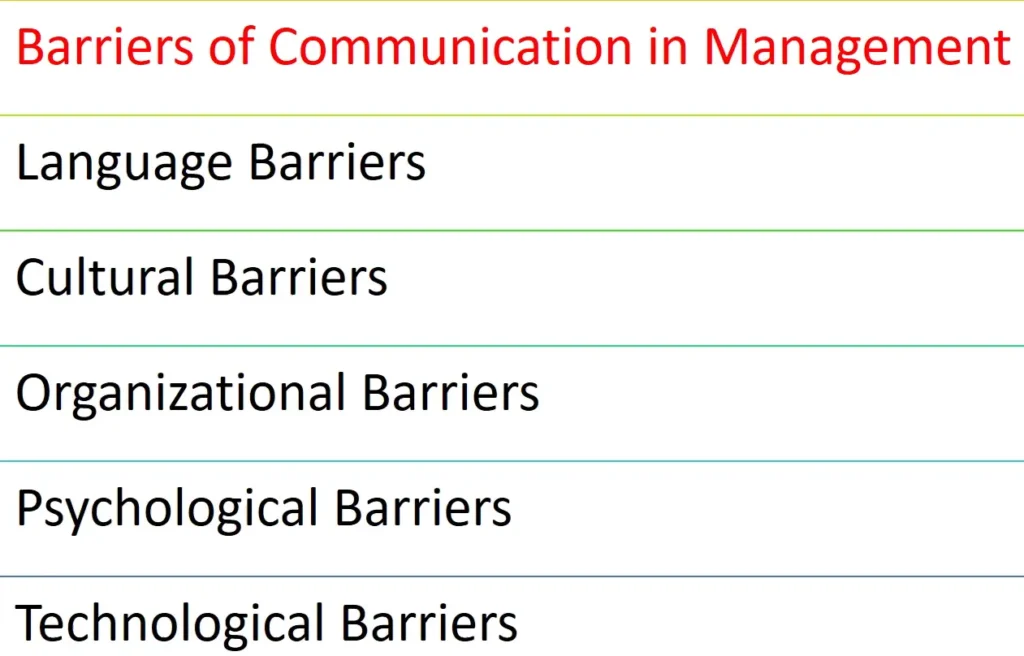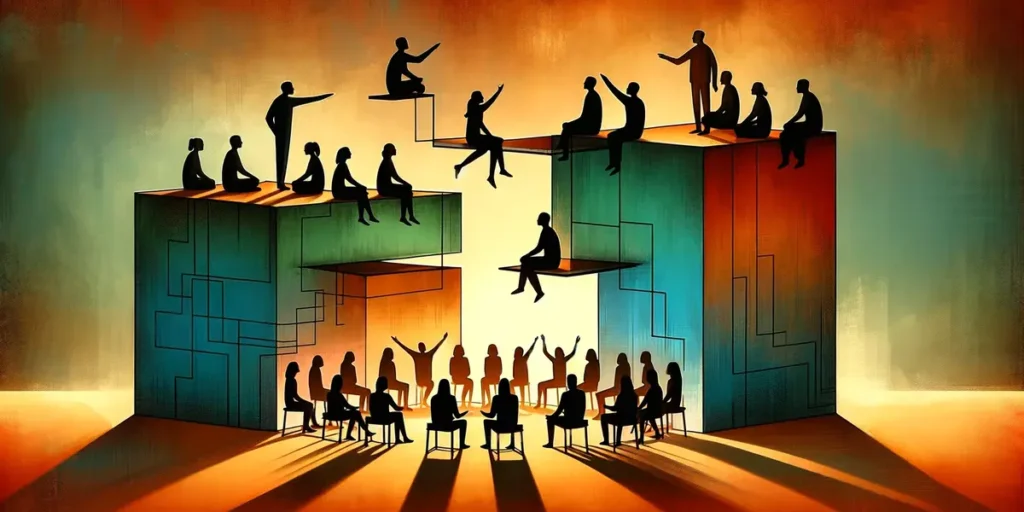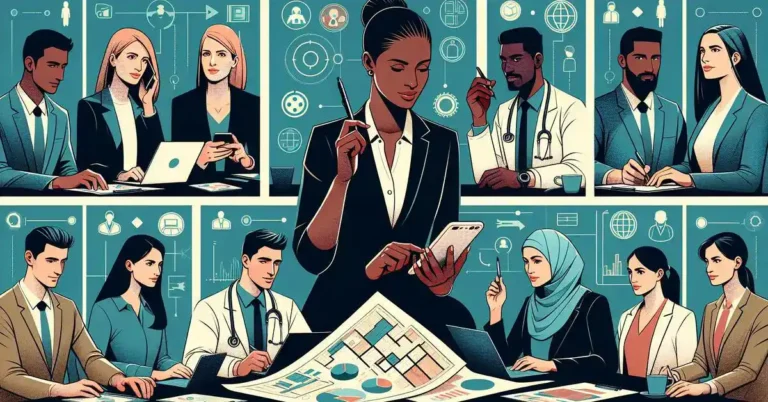Barriers of Communication in Management
Effective communication is the backbone of successful management, yet it’s often riddled with unexpected barriers that can throw a wrench in the works. I’ve navigated through various management roles, and I’ve seen firsthand how miscommunication can lead to missed deadlines, frustrated teams, and even lost revenue.
Barriers to communication in management include information overload, where too much information leads to confusion; hierarchical structures that can inhibit open dialogue; and cultural differences that can result in misinterpretation of messages.
In this article, I’ll dive into the common barriers that hinder communication in management. From cultural differences to technological glitches, understanding these obstacles is the first step toward overcoming them. Join me as we explore strategies to break down these barriers, ensuring your message isn’t just heard, but understood and acted upon.
Barriers of Communication in Management
In my journey through the complexities of management, I’ve encountered numerous hurdles that can hamper effective communication. It’s critical to identify and address these barriers head-on to foster a positive and productive workplace. Below, I’ll delve into some of the most common obstacles I’ve faced and share insights on how to navigate them.

Language Barriers
Language barriers represent a significant challenge in today’s globalized business environment. When team members do not share the same primary language, it can lead to misunderstandings and errors. This is not just about different national languages; it also includes industry-specific jargon and acronyms that may be unfamiliar to newcomers or individuals from different departments. To mitigate these issues, I’ve found that encouraging the use of clear, simple language and providing language training opportunities can be incredibly effective.
Cultural Barriers
Cultural differences can also lead to communication barriers within a team. Varied norms, values, and etiquette can influence how messages are interpreted. For instance, the concept of saving face is paramount in some cultures, which might lead to indirect communication styles that are unfamiliar to others. I’ve learned that fostering an environment of inclusivity and cultural sensitivity plays a crucial role in overcoming these communication barriers in management. Regular cultural competency workshops have been instrumental in my team’s ability to and embrace our differences.

Organizational Barriers
The structure of an organization can inadvertently create barriers to effective communication. Hierarchical levels, for instance, can intimidate employees from openly sharing their thoughts and ideas with management. Similarly, departmental silos can lead to a lack of collaboration and information sharing across the organization. Streamlining communication channels and encouraging an open-door policy have been key strategies I’ve employed to break down these organizational barriers.
Psychological Barriers
Psychological factors such as perception, attitudes, and emotions can greatly affect how messages are conveyed and received. For example, if an employee feels undervalued, they may be less inclined to communicate effectively with their peers or superiors. Building trust and ensuring a supportive environment where employees feel heard and respected is essential in overcoming psychological barriers. Regular team-building activities and promoting a positive work-life balance have proven beneficial in my experience.

Technological Barriers
In our ever-increasing reliance on technology, technical glitches can become a formidable barrier to communication. Whether it’s poor internet connectivity interrupting virtual meetings or compatibility issues between different software platforms, technology can both facilitate and hinder communication. Ensuring reliable IT support and providing training on the tools and platforms used within the organization has been vital in minimizing these technological barriers.
Understanding and addressing these barriers is a continuous process. As the landscape of communication evolves, so do the challenges we face in management. However, with proactive strategies and a commitment to understanding, we can navigate these hurdles effectively.
Overcoming Communication Barriers
Overcoming the barriers of communication in management is crucial for fostering a healthier work environment and achieving organizational goals. From personal experience, I’ve learned that addressing these obstacles requires a proactive approach and a commitment to continual improvement. In this section, I’ll delve into effective strategies that can help break down these barriers.
Improving Language Skills
One of the first steps in overcoming communication barriers is Improving Language Skills. Language proficiency is key, especially in diverse workplaces with multi-lingual teams. Here are a few tactics I’ve found successful:
- Offering language training programs
- Encouraging staff to use simple, clear language
- Utilizing translation tools for better understanding
By investing in language skills, we not only bridge communication gaps but also build a more inclusive work culture.
Encouraging Cultural Awareness
Cultural differences can lead to misunderstandings and conflicts. That’s why Encouraging Cultural Awareness is vital. Here’s how I approach this:
- Organizing cultural sensitivity training sessions
- Celebrating different cultural events in the workplace
- Encouraging open conversations about cultural norms
These actions help in creating a more empathetic and respectful workplace where everyone feels valued.
Streamlining Organizational Structure
A complex organizational structure often leads to communication breakdowns. Thus, streamlining the organizational structure is imperative. Simplifying reporting lines and clarifying roles and responsibilities can significantly enhance communication. This means:
- Reducing hierarchical levels
- Implementing cross-functional teams
- Encouraging direct communication paths
These changes foster a more open and accessible communication flow across all levels of the organization.
Promoting Psychological Safety
A work environment that promotes psychological safety encourages people to express their thoughts without fear of negative repercussions. This is critical for open and honest communication. I prioritize:
- Encouraging feedback and active listening
- Valuing all contributions equally
- Addressing interpersonal conflicts promptly
Building a psychologically safe workspace ensures that team members feel secure in voicing their concerns and ideas.
Embracing Technological Advancements

In today’s digital age, Embracing Technological Advancements is non-negotiable for effective communication. Leveraging the right tech tools can transform how we communicate. I recommend:
- Implementing collaboration platforms
- Training staff on the latest communication tools
- Ensuring reliable IT support
Technology, when used wisely, can dramatically reduce communication barriers and enable seamless collaboration regardless of geographic locations.
Each of these strategies plays a critical role in overcoming the barriers to effective communication in management. By addressing these areas, I’ve seen substantial improvements in team cohesion and productivity. It’s about creating an environment where everyone feels heard, understood, and valued.
Conclusion
Breaking down the barriers of communication in management isn’t just about implementing strategies; it’s about creating a culture where every voice is valued and understood. From my experience, addressing these challenges head-on has not only improved team dynamics but also enhanced overall productivity and satisfaction. By committing to continuous improvement in how we communicate, we pave the way for more effective leadership and a more cohesive team environment. Remember, the goal isn’t just to talk but to connect, understand, and progress together. Let’s make communication our bridge, not our barrier.






